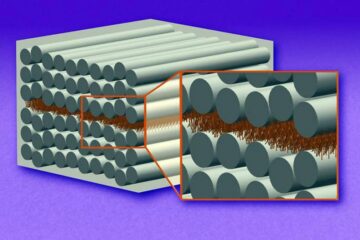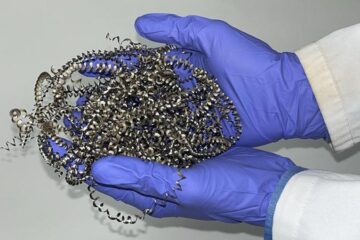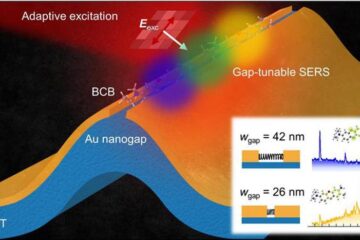European project opens way for better understanding of human diseases

In the edition of Nature dated Thursday 21 February 2002, an international team of scientists report their analysis of the genome of fission yeast (Schizosaccharomyces pombe). The project, largely funded through a €6.9 million from the European Commission, is likely to have major implications for the future of cancer and other bio-medical research. Fifty of the yeast genes were found to have significant similarity with genes involved in human diseases, including cystic fibrosis, hereditary deafness and non insulin dependent diabetes, and half were found to be cancer related. Because yeast cells are similar to human cells but easier to study, this work is leading to a better understanding of what each gene controls, and how they may be involved in cancer and other diseases in humans.
Research Commissioner Philippe Busquin commented this scientific breakthrough saying: “This type of research is yet another example for the strong link between scientic advancement and practical use for the citizen. Unlike other genomics projects, Europe has taken the leading role in this research through networking of the best. That is precisely what I have been advocating since the Lisbon summit in spring 2000, where I proposed to create a European Research Area.”
Schizosaccharomyces pombe is known as fission yeast because it reproduces by splitting rather than by budding like Saccharomyces cerevisiae (baker`s yeast), and is occasionally used for brewing beer. Like man, it is an eukaryote, i.e. an organism that, unlike bacteria, contains its genome in a nucleus inside the cell and is generally thought to be more complex.
The completion of the sequence and analysis of this genome is the result of the joint effort of 13 European laboratories led by the Wellcome Trust Sanger Institute which sequenced two-thirds of the genome and did the gene predictions and annotation for all of the sequence. The global analysis of the genome was performed jointly by Cancer Research UK and the Sanger Institute. The second phase of the sequencing was carried out by a European Consortium led by the Sanger Institute. The consortium consisted of major European laboratories that also contributed to the S. cerevisiae genome project. The majority of funding for the project was from the European Commission (€6.9 million out of a total budget of €9.4 million).
The 133 authors of the Nature paper include Dr Paul Nurse of Cancer Research UK, whose work on fission yeast and cell division recently led to the award for the Nobel prize for Medicine, and Dr Bart Barrell and Val Wood from the Wellcome Trust Sanger Institute near Cambridge.
Dr Nurse stated: `Biomedicine depends on our study of model organisms, which can provide key insights into the way in which the more complex human genome works. The genome fission yeast is only the sixth higher (eukaryotic) life form to be decoded. Significantly, many decisions the humble yeast cell makes in cell division use genes that are closely related to genes implicated in many human cancers: this small organism could prove vital in helping to better understand and treat cancer and other diseases.`
Val Wood, from the Wellcome Trust Sanger Institute, commented: `Each step in our study of genomes brings new and surprising understanding of the common basis that underlies the way cells work. In this international collaboration we have provided high-quality sequence and precise analysis of the genes buried in the fission yeast genetic code, demonstrating the value of sharing genomic information. Through this shared effort, the genome of S. pombe is one of the best annotated of any non-bacterial cell. As well as finding cancer-related genes, we have begun to illustrate how other functions in this, perhaps the simplest complex cell, can bring new tools to understanding ourselves and our place in evolution.`
The joint effort to sequence and analyse the sequence of a micro-organism to better understand and improve human health is a typical an example of the continuing European effort in the area of Genomics and Biotechnology for Health. Building on such major achievements, the European Commission proposes to allocate €2.2 billion to this priority in the forthcoming Sixth Framework Programme (2002-2006).
Media Contact
More Information:
http://www.sanger.ac.uk/Projects/S_pombe/All latest news from the category: Health and Medicine
This subject area encompasses research and studies in the field of human medicine.
Among the wide-ranging list of topics covered here are anesthesiology, anatomy, surgery, human genetics, hygiene and environmental medicine, internal medicine, neurology, pharmacology, physiology, urology and dental medicine.
Newest articles

“Nanostitches” enable lighter and tougher composite materials
In research that may lead to next-generation airplanes and spacecraft, MIT engineers used carbon nanotubes to prevent cracking in multilayered composites. To save on fuel and reduce aircraft emissions, engineers…

Trash to treasure
Researchers turn metal waste into catalyst for hydrogen. Scientists have found a way to transform metal waste into a highly efficient catalyst to make hydrogen from water, a discovery that…

Real-time detection of infectious disease viruses
… by searching for molecular fingerprinting. A research team consisting of Professor Kyoung-Duck Park and Taeyoung Moon and Huitae Joo, PhD candidates, from the Department of Physics at Pohang University…





















